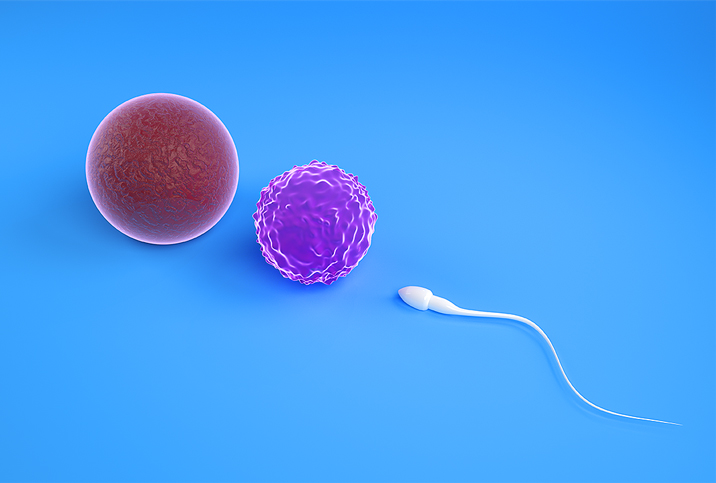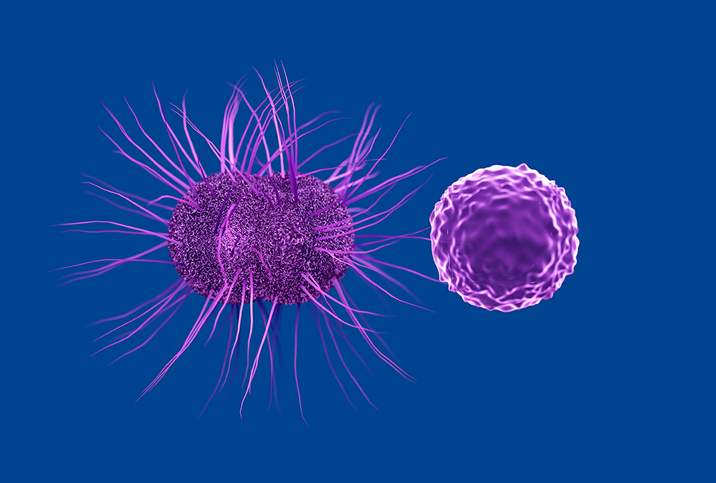Double Trouble: Chlamydia and Gonorrhea

No one wants to contract chlamydia or gonorrhea, so learning you have both would be quite an unpleasant surprise. However, a dual diagnosis of these two diseases is extremely common. Here's what you should know about this particular instance of double trouble.
Chlamydia in review
Caused by the bacteria chlamydia trachomatis, chlamydia is the second most common sexually transmitted disease (STD) in the U.S. (the first being human papillomavirus, or HPV). In 2019, more than 1.8 million Americans were reported infected to the Centers for Disease and Control Prevention (CDC), and it was found to be especially common among sexually active young adults under age 24.
Controlling the spread of chlamydia is difficult, as it often presents no symptoms. Possible telltale signs include penile/vaginal discharge, pain or burning with urination, testicular swelling in men and bleeding in between periods in women. It is particularly serious if left untreated in females, and can cause pelvic inflammatory disease (PID), ectopic pregnancy and infertility. Women are at a higher risk for contracting the infection due to basic anatomy (the vagina has a higher chance of abrasion/microtrauma to the lining) as well as cultural factors—women are less likely to insist on condom use, relying on other forms of birth control.
Chlamydia is routinely checked for in recommended sexually transmitted infection (STI) screenings for both sexes, commonly performed at annual gynecologic visits for women under 25 and high-risk women, to help catch undetected cases. The infection clears in about a week after treatment with oral antibiotics—most often one dose of azithromycin or doxycycline twice daily for one to two weeks.
An overview of gonorrhea
The third most common STD in the U.S., gonorrhea is caused by the bacteria Neisseria gonorrhoeae, and it can infect the urethra, the rectum and the throat, and, more rarely, the eyes, as well as the cervix in women.
Gonorrhea is spread through vaginal, anal and oral sex. Like chlamydia, gonorrhea more commonly affects those under 25 and often causes no symptoms, particularly in women. That said, some experience painful urination. Men may have penile discharge or a swollen or painful testicle, and women may notice increased vaginal discharge, abdominal pain and abnormal vaginal bleeding.
If the infection isn't cleared, gonorrhea can spread to the joints and cause infertility in both sexes. It also increases the risk of HIV contraction and can cause blindness in babies exposed to the virus during birth from infected mothers.
Untreated gonorrhea causes long-term complications similar to chlamydia in women. Treatment includes injection with an antibiotic called ceftriaxone, along with the oral antibiotic azithromycin, though resistance has made gonorrhea treatment more challenging in recent years.
In 2019, more than 616,000 infections were reported in the United States, up 92 percent since 2009.
Co-occurrence
You may have noticed a handful of similarities between chlamydia and gonorrhea—subtle symptoms, high infection rates and damaging long-term effects for women if the infection doesn't clear. These two STDs aren't just similar, they're also likely to travel together—or co-occur.
A 2004 study of STDs of almost 6,000 high school students reported co-occurrence rates of 11.1 percent for chlamydia and 42.7 percent for gonorrhea. This means more than 11 percent of students with chlamydia also had gonorrhea, and more than 42 percent of those with gonorrhea also had chlamydia. The findings of this study support dual treatment of both diseases in clinical settings, which has now become the standard of care.
Today, if you're tested for one of the STDs, you'll most likely be tested for both. And if you test positive for one of them, you'll likely be treated for both. Because these diseases commonly travel together, the best way to control them in the population is to treat them as a dynamic duo.
Exploring the relationship
Why are these guys best buds, you might ask? First off, the risk factors for chlamydia and gonorrhea are nearly identical: Unprotected sex, sex with multiple partners and sex with a new partner. They're spread through similar activities and may infect most of the same areas of the body. And because they're both so prevalent in the population, they often get contracted and passed on together. Quite the pair.
Talk to your partners about their sexual health, and ask if they've had a recent STI test. If you have symptoms, get tested immediately at your doctor's office or a free clinic. If you're nonmonogamous and sexually active, regular testing is important for maintaining good health. Don't be embarrassed or ashamed of a positive diagnosis—STIs and STDs are very common and are not an indication you did anything wrong. Inform your current partner and any past partners of your diagnosis, so they can get tested, too. This is critical because, without treatment, your partner could easily pass the disease back to you, and a past partner could pass it to someone else.
Until the infection clears, it's essential you don't engage in sexual activity with anyone else. Flying solo is fine. And to protect yourself against co-occurrence of chlamydia and gonorrhea, there are no complex steps—simply use condoms and use them properly.
















